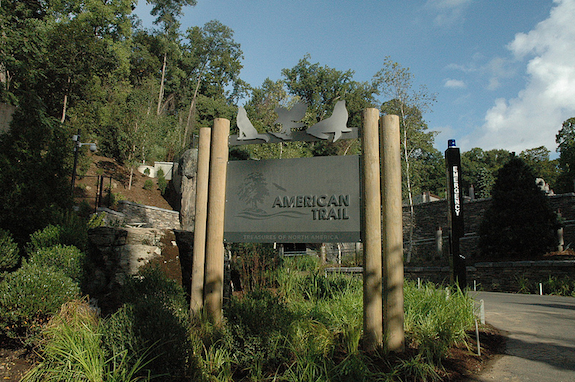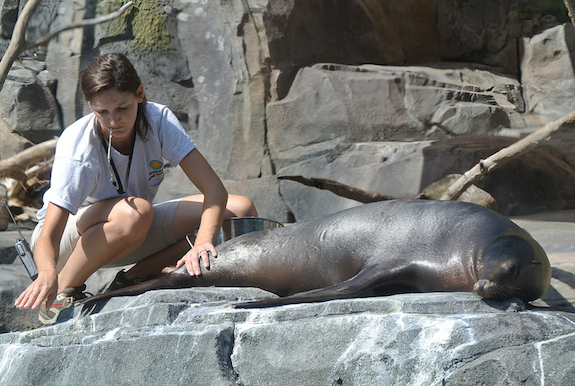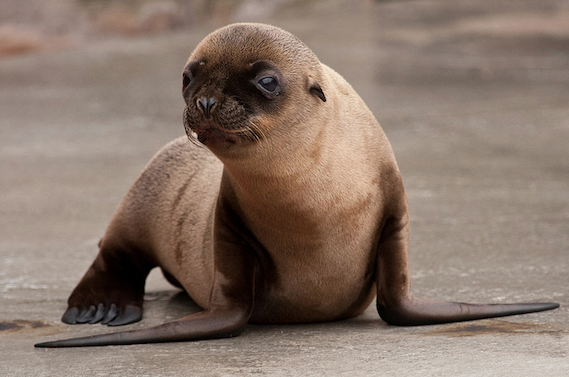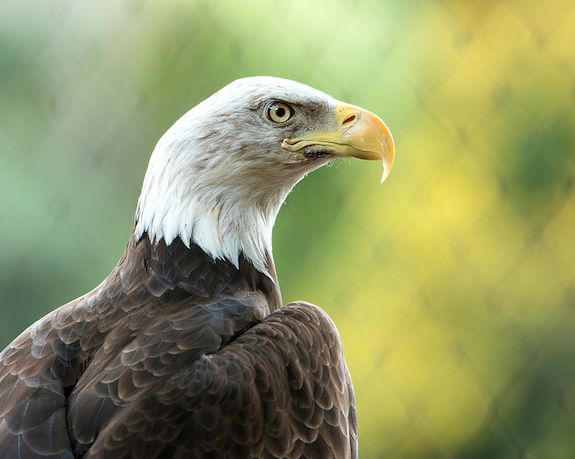PHOTOS: American Trail Opens Tomorrow at The Zoo, Complete with LEED Certification and a Navy Seal
Take a stroll through North America’s majestic biodiversity
![]()

The American Trail exhibit opens Saturday, September 1st at the National Zoo. Photo Courtesy of The Zoo
Highlighting the animals found “in our own backyard,” The National Zoo’s American Trail opens tomorrow with an eye towards animal conservation, green initiatives and an interactive learning experience. The trail features 10 different animal species common to North America, spread along a winding path rife with shady trees and glimmering pools.
The land of the American Trail has been a part of the Zoo since the 1880s, when it was called “Beaver Valley” after a family of wild beavers who lived there. It was last updated in 1976 to accommodate new animals, and tomorrow it will re-open in a new-and-improved version of the space with a clear, comprehensive goal: to create an exhibit that demonstrates the very best practices in animal care and to serve as a leader in sustainable energy practices.
The trail and its buildings, tanks, and pens are LEED certified and feature complex filtration systems that rely on Washington, DC’s tap water. Animal Keeper Christina Castiglione says that green initiatives are “very important because if we employ them here, we can encourage the general public to employ them, too. We can lead by example.”
The trail’s LEED certification fits in well with its larger message of conservation. While many flock to see the Giant Pandas and other animals that come from far-off lands, zoo-goers tend to forget that North America is home to many majestic and awe-inspiring creatures. “We spend so much money saving pandas and other foreign animals,” says Animal Keeper Rachel Metz, “but we forget that people from other countries visit this part of the world and say, wow, these animals are so special. Americans will feel the same way if they can see them up close.”
While some of the animals on view were rescued from the wild, many came from other zoos, and several were even bred in breeding centers around the country. This makes the animals more receptive to their keepers, so that visitors can watch as they are fed and worked with right on the trail. “It’s a more interactive experience,” says Castiglione.

An animal keeper works with a sea lion. The American Trail offers many opportunities for zoo-goers to witness interaction between animals and keepers.
The animals in the exhibit were chosen based on their regional relevance and for the strong conservational messages they represent. The Marine Mammal Protection Act, for example, enacted in 1972, has been responsible for the successful repopulation of many marine animals, and with the American Trail’s seals and sea lions, zoo-goers can witness the effects of this kind of national conservation effort firsthand. One particularly endearing example is Selkie the gray seal, who was, quite literally, a Navy seal, trained to perform missions during the Cold War. She learned how to use a screwdriver and turn large wheels, and she assisted divers and located lost gear. Selkie represents how far we have come in conservation efforts to preserve species like the gray seal, who for centuries were hunted commercially across the Eastern Seaboard.

Selkie was trained by the Navy to perform special operations during the Cold War. Photo courtesy of The Zoo
The exhibit’s bald eagle, otters and Mexican gray wolves tell similar conservation success stories. “The bald eagle,” says Castiglione, “is such a huge part of American history, and we were able to rescue Tioga, who was injured in the wild.”
Also joining the list of animals are ravens, beavers, hooded merganser ducks and brown pelicans. The impressive list of animals reflects an important sentiment: If we can continue to conserve our natural resources, we will be able to look at these native animals and more for centuries to come.


